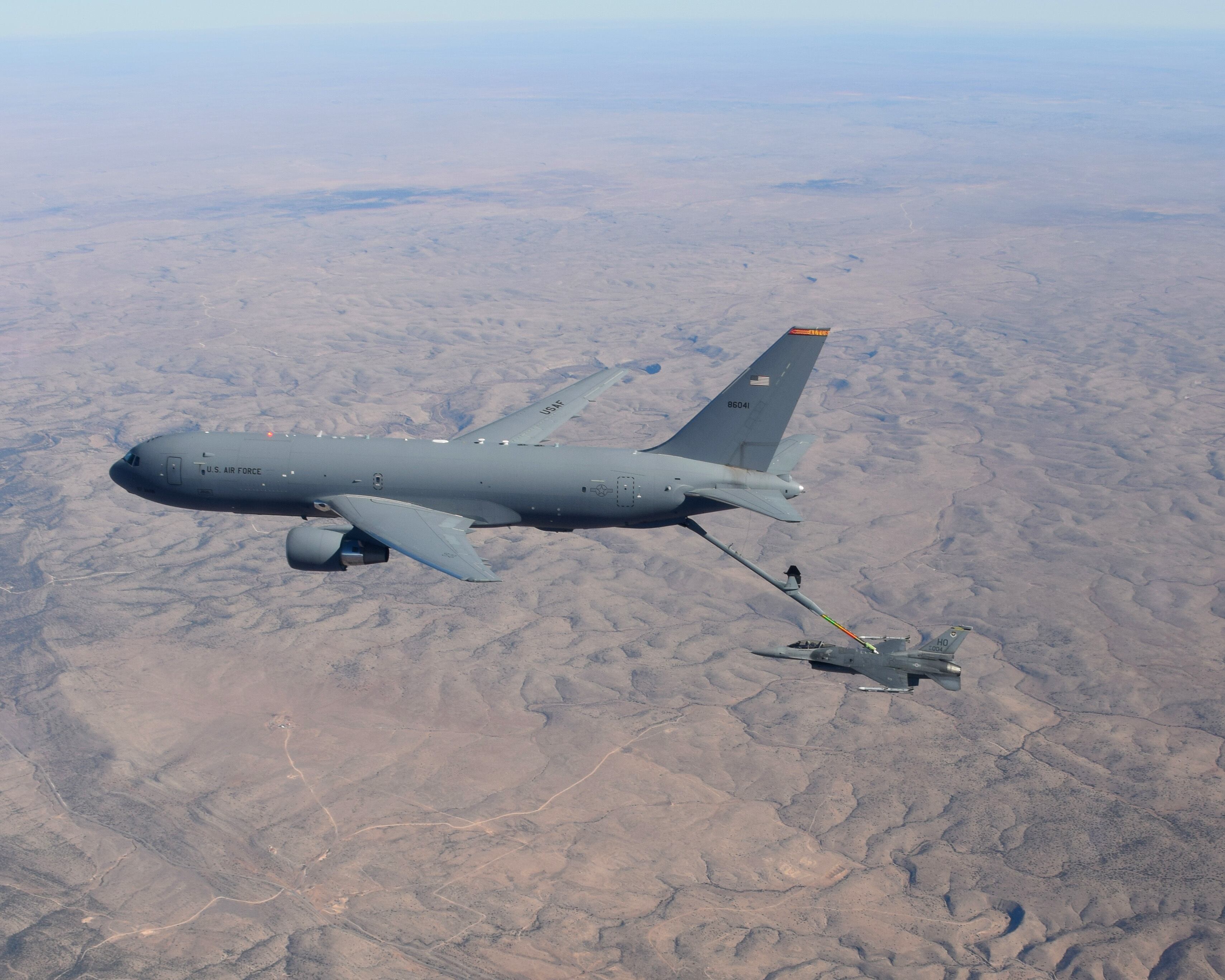WASHINGTON — Boeing and the U.S. Air Force have agreed on a plan to replace the KC-46 Pegasus’ troubled Remote Vision System with an upgraded version.
Air Force spokeswoman Capt. Samantha Morrison said in a Tuesday statement that the preliminary design review for RVS 2.0 — the proposed replacement for the KC-46′s vision system — was officially closed April 11, meaning the service had accepted the completed design.
Morrison also said Boeing will cover the costs of all RVS 2.0 efforts under the engineering and manufacturing development contract.
Breaking Defense first reported the design review was closed and that Boeing would pay for the replacement system.
The months-overdue agreement sets a path forward for resolving one of the most significant, lingering problems with the Air Force’s newest refueling tanker.
Unlike its predecessors, the KC-10 Extender and the KC-135 Stratotanker, boom operators on the Pegasus use a network of cameras and sensors to guide the boom into the aircraft being refueled.
Under certain lighting conditions, the imagery captured by the original RVS can be distorted or difficult to see, running the risk of the boom accidentally scraping the receiving aircraft. This problem was deemed a category I deficiency, or one of the most serious issues remaining with the aircraft.
In April 2020, the Air Force and Boeing decided to replace the vision system with a redesigned version, scheduled for completion by mid-2024.
But the Air Force and Boeing had trouble coming agreeing on the design of RVS 2.0. The preliminary design review was held in May 2021, and Air Mobility Command originally expected it to conclude last fall.
That didn’t happen, and the command said in January that it recommended the review remain open until a plan is in place to fix problems with the panoramic visual system.
Troubles with the vision system led to a $402 million charge for Boeing in the last quarter of 2021, bringing the total in cost overruns the company has paid on the KC-46 to more than $5.4 billion.
The Air Force said the new vision system’s design includes several “marked improvements,” including a new, full-color, 4K resolution virtual view display.
It also includes improved and redundant visual cameras, improved infrared cameras, a full redesign of the aerial refueling operator station, redesigned image processors, and upgraded panoramic sensors, the Air Force said.
In a statement provided to Defense News, Boeing said the upgraded cameras will provide “seamless field of view day and night” and include three pairs of panoramic visible cameras for daytime operations and long-wave infrared cameras for nighttime.
“The KC-46A evolves with the needs of the mission and these upgrades are an example of how Boeing and the Air Force partner to incorporate state-of-the-art technology directly into the KC-46 production line,” Boeing said. “Generations of service members will benefit from these new capabilities as they operate the world’s most advanced aerial refueler.”
The program is still on schedule, the Air Force said, and the service expects the redesigned system to help resolve “significant portions” of two category I and six category II deficiencies.
In the next few weeks, the Air Force said, it and Boeing will update the engineering and manufacturing development contract with the product baseline design specification, which will document the new design agreed upon.
Boeing will continue RVS 2.0 efforts at its own cost, Morrison said. But in the future, the government will likely have to cover the costs of any further design changes it requests, she said.
Boeing has delivered 57 KC-46s to the U.S. Air Force, and another two to the Japan Air Self-Defense Force.
Earlier this month, Air Mobility Command chief Gen. Mike Minihan approved the KC-46 to start refueling the F-35A and F-22 Raptor fighters during U.S. Transportation Command-tasked missions. Air Mobility Command said this means the Pegasus is now cleared to support almost 85% of Transportation Command’s air refueling tasks.
Stephen Losey is the air warfare reporter for Defense News. He previously covered leadership and personnel issues at Air Force Times, and the Pentagon, special operations and air warfare at Military.com. He has traveled to the Middle East to cover U.S. Air Force operations.
